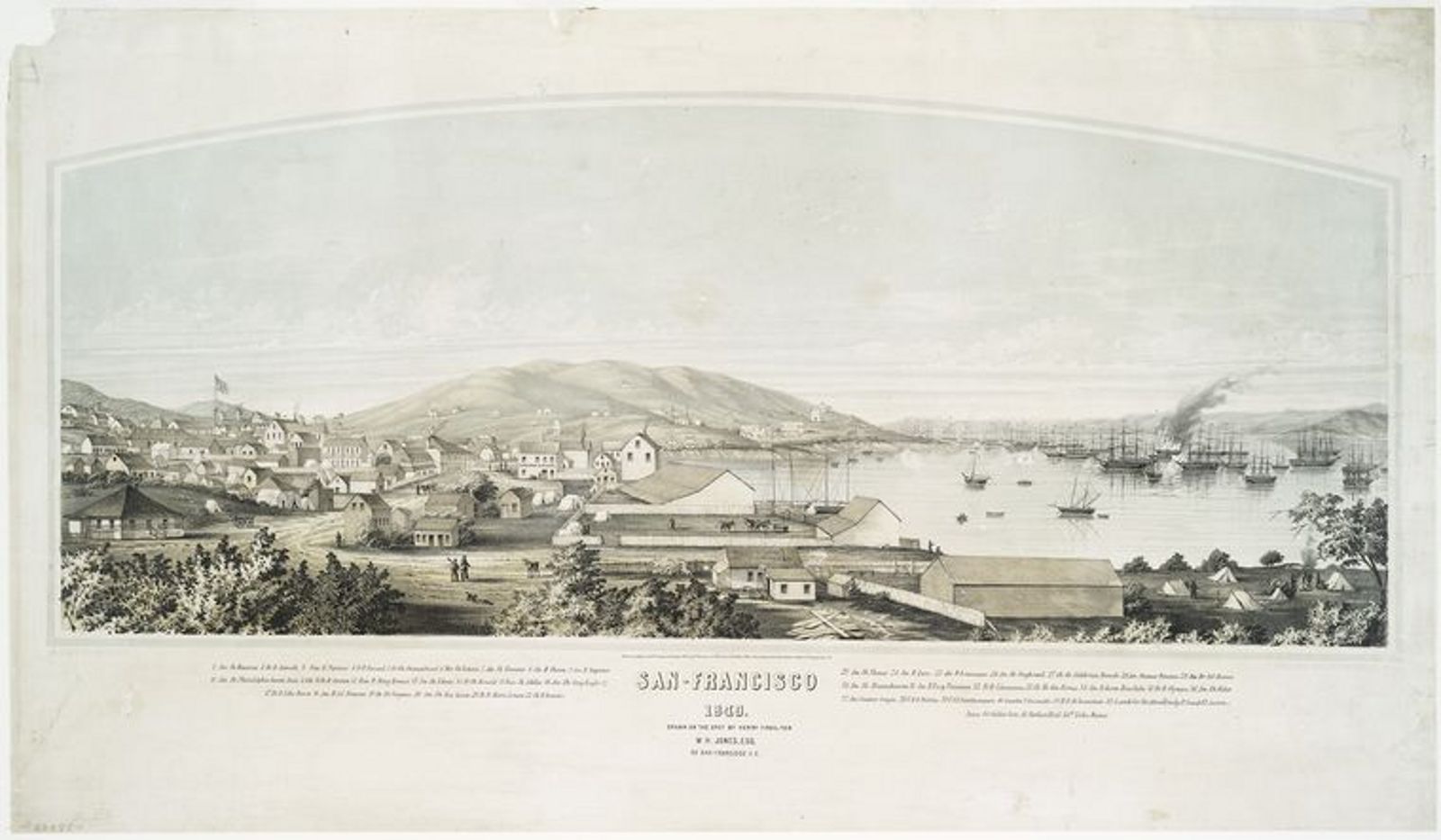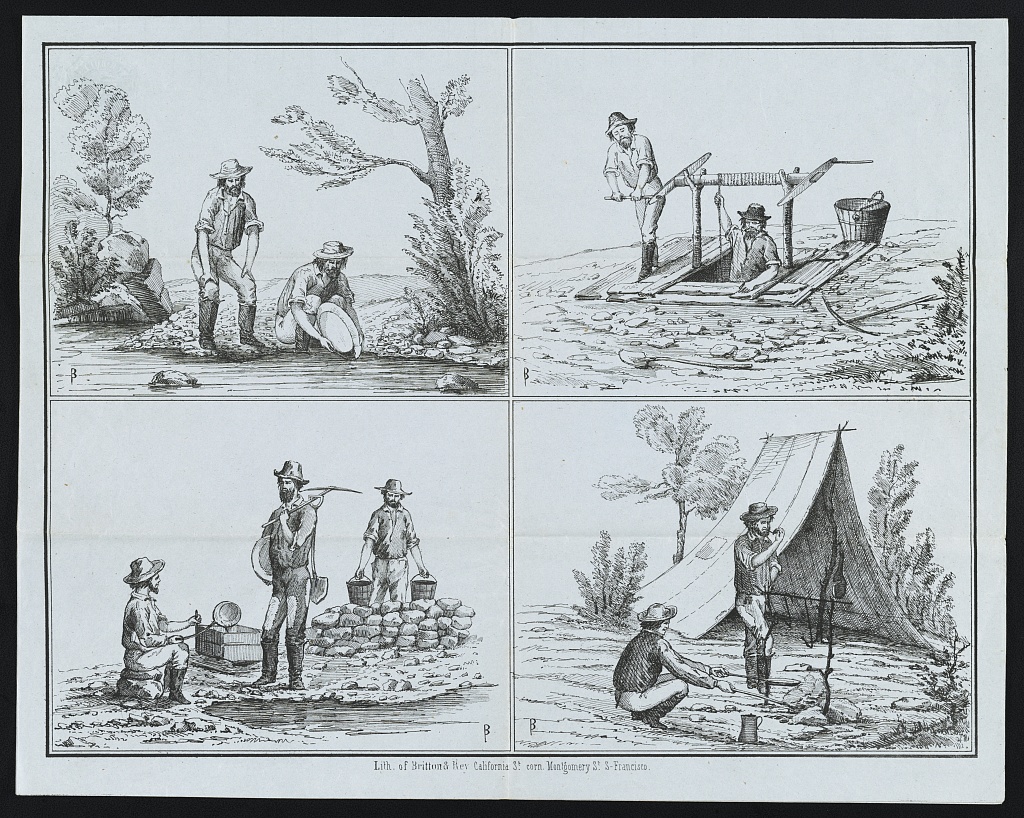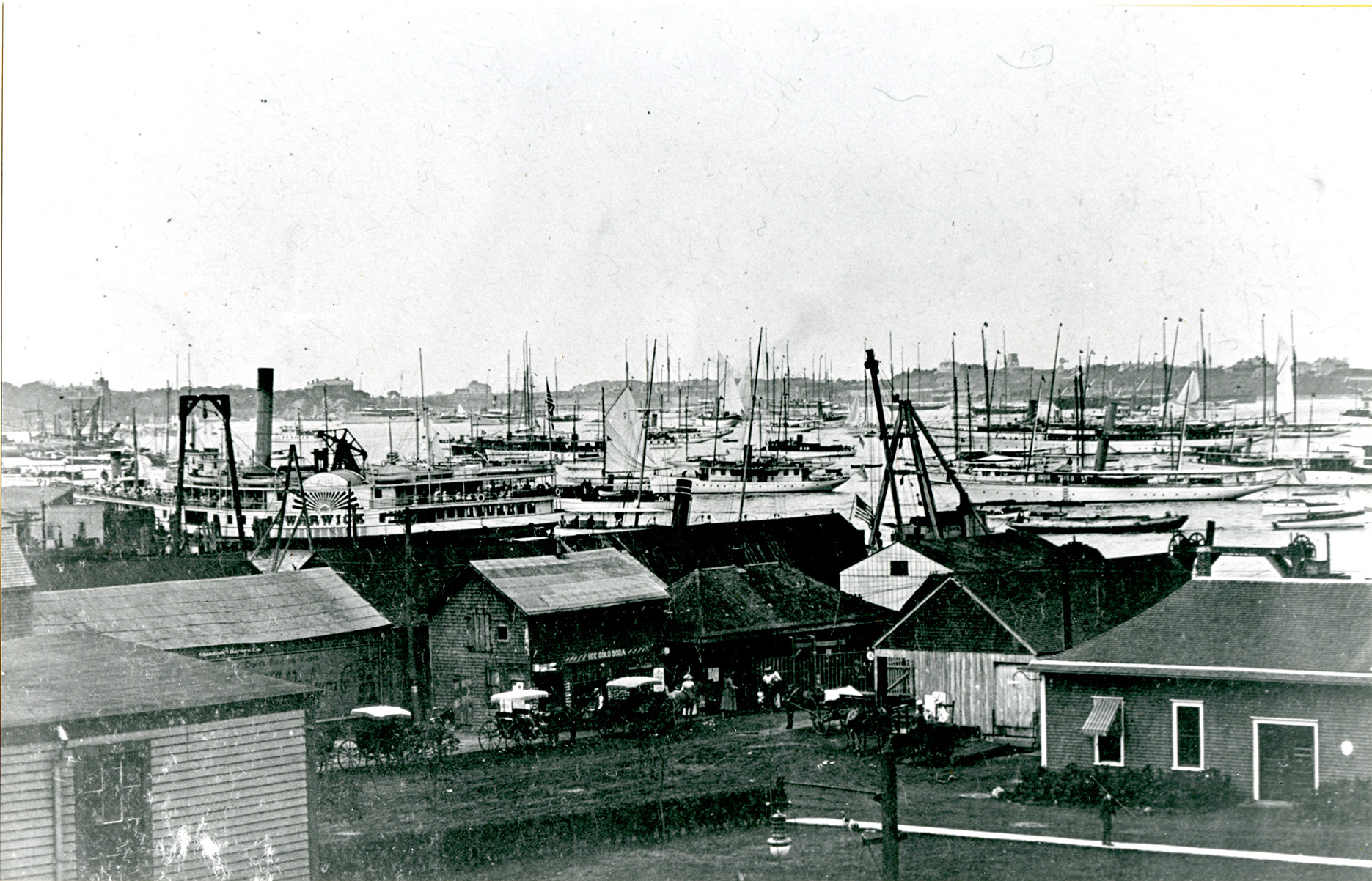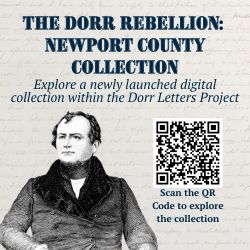In my prior article, “Newporters Catch Gold Fever, Sail to California in 1849,” the story of the Audley Clarke’s voyage to San Francisco was detailed. When Newport mariners heard about the California gold rush in late 1848, they caught “gold fever” and found the urge to try their hands at mining gold irresistible. More than 70 Rhode Islanders formed a company that purchased the Audley Clarke and sailed it to San Francisco, where many passengers and crew members headed for the gold fields. The crew members went too, so no one was interested in sailing the Audley Clarke back to Newport. At the time, California had few settlers from the United States and little was known about it in the East.
In the summer of 1849, another Newport vessel departed for San Francisco, but the organizers of this voyage had a plan beyond simply its crew and passengers abandoning their ship and heading for the gold fields. The voyage’s main investor, Captain John Hammond of Newport, had the following plan. He would build two small sloops, then break them down and store them and their sails and rigging on his schooner, the Alexander. Once in San Francisco, the two sloops would be rebuilt and operate as “lighters.” These were small vessels that carried cargo and other supplies from large ships just arriving in San Francisco Harbor to the wharves in the harbor where the cargo and supplies would be unloaded. Hammond saw an opportunity to benefit from the high prices then being charged in the port city, which was the hub for the various gold mining fields in the state.

San Francisco Harbor, as it appeared in 1849. This would have been a familiar scene to the Newporters from the Alexander (New York Public Library Digital Collections)
Captain Hammond also had a plan for crew members. He figured that there would be a demand among some young sailors in Newport to go on the voyage and that they would be willing to pay their fare by working as crew members on the Alexander on the voyage to San Francisco. In addition, he required that such crew members work at least one year on the two lighters that he would operate in San Francisco Harbor. Hammond’s hunch was correct. He found thirteen seamen in Newport willing to accept his terms.
At Newport’s Long Wharf, in the summer of 1849, the Alexander was overhauled and outfitted for its long voyage to California. It had been built in New Jersey in 1835. It was a good-sized schooner at 58-feet long and 21-feet wide, with a depth in its holds of five feet seven inches. But it was a relatively small vessel to sail around Cape Horn all the way to San Francisco.
In that same summer, two small, flat-bottomed sloops were built at Gravelly Point in Newport Harbor, complete with masts, rigging and sails. When the construction was finished, the two sloops, with all their sails and rigging, were broken down and stored in the Alexander. Whatever could be stored below-decks was done, and the rest had to be secured to the top deck. Once that was done, the holds of the schooner were filled with cargo that the investors thought could be sold at advantage in San Francisco.
Captain Hammond had another interesting item loaded onto his ship: the wood for a two-story house. The house was framed by carpenters in Newport and then broken down and stored on the Alexander, ready to be sold to a California buyer.
The Alexander began its voyage from Long Wharf for San Francisco on October 14, 1849 at 10 a.m. The schooner sailed with officers and crew of fourteen men. The schooner’s master was 33-year-old William H. Dennis of Newport, and its first mate was a Captain Foote, known in maritime circles in both Newport and Providence. Charles L. Stanhope, in an 1894 article describing the voyage when he was 75 years old, recalled that the crew members were as follows: Joseph Mainwaring, Dennis’s half-brother; William H. Smith, who years later became Inspector of the Customs House in Newport; John Albro of Newport; John Brown of Newport; Stephen Burdick of Newport; Samuel Simpson of Newport, whose father was a Newport blacksmith; a caulker from Newport named Dexter; Robert Hollingsworth, who may have been a hired servant in Captain Hammond’s household; a carpenter named King; another man named Hammond, who was likely related to Captain Hammond; and a Block Islander named Gorham who at the time had been an employee of the federal revenue service.
Based on Seamen’s Protection Certificates issued to some of the above sailors, they tended to be young men. At the time of the voyage, William H. Smith was 17 years old, John H. Albro and John L. Brown were each 19, and Stephen W. Burdick was 21. It did not appear to be an experienced crew. Burdick received his Seaman’s Protection Certificate in Newport three years prior to the voyage, but those for Smith, Albro and Brown were not even issued until a week after the voyage began. Mainwaring, Simpson, Hollingsworth and Gorham may have had little or no experience at sea, as none of them ever applied for a certificate.

What brought the Newporters on the Alexander to San Francisco was the discovery of gold in western parts of California in 1848 and 1849 (Library of Congress)
Charles Stanhope also enlisted as a crew member. Charles L. Stanhope, on November 12, 1841, at age 17, registered in Newport for a Seaman’s Protection Certificate. Thus, he was an experienced sailor. It will be recalled that he had sailed on board a Newport whaling ship into San Francisco Harbor in 1848, just as the news of the discovery of gold in California swept the state. Stanhope brought reports of the gold find to Newport, which helped to spur the voyage of the Audley Clarke to Newport.
The Alexander’s main cabin was under its deck. It was a good sailing vessel and weathered nicely numerous severe gales on its voyage to California. In the midst of a gale, crew members would lie on the top deck under a foresail.
The Alexander made only one stop on its voyage, at New Island, one of the Falkland Islands. There additional supplies were purchased. Meanwhile, crew members simply swung sticks and killed numerous geese that flew all around them. Stanhope also recalled seeing thousands of penguins on the island.
The schooner arrived at San Francisco Harbor on May 6, 1850, for a voyage of 194 days from Newport. Waiting for them were Captain Hammond, his brother Moses, John Goddard, and several others from Newport. They had travelled to San Francisco via the Isthmus of Panama by sailing to Panama, taking the overland route across Panama to the Pacific Ocean, and then travelling on another sail boat to San Francisco.
Hammond distributed the crew members among the Alexander and the two sloops. The two lighters were named Energetic and Ever Ready and, according to Stanhope, “found plenty of employment.” Captain Hammond commanded the Ever Ready. After three years of work, Hammond sold the Energetic to Captain George Barney, formerly a captain from Newport but now of San Francisco. One-quarter of the Alexander was sold to John B. Newton, also a transplant from Newport, who commanded the ship for a time.

Newport Harbor scene in 1911, including the ferry boat Warwick, with buildings on wharves in the foreground (Providence Public Library Digital Collections)
Ultimately, Captain Hammond sold all his interests in the Alexander and the two lighters. According to Stanhope, the Alexander remained in California and after it was rebuilt in 1877, came under the ownership of Captain John McKenzie. The last Stanhope heard in 1894, McKenzie was still operating the Alexander. McKenzie had been a passenger on board the Audley Clarke when it arrived from Newport to San Francisco in February 1849.
The two-story house brought to California by the Alexander had an interesting history. According to John Hammond, the son of Moses Hammond, who arrived in San Francisco with Captain Hammond, in a letter to the Newport Mercury, the house was “erected at San Joaquin City, California. In 1852 a flood floated it down the river to Stockton where it now stands on Market Street in that city almost as sound as when first erected.”
The author has not determined how many of the officers and crew of the Alexander remained in California and how many returned to Newport. Charles Stanhope returned to Newport, as did William A. Smith, who became Inspector of the Customs House. It seems likely that most of the passengers and crew remained to start a new life in California.
Sources
For Charles Stanhope’s recollections of the Alexander and its voyage to San Francisco, see Newport Mercury, March 3, 1894. For John Hammond’s recollections about the two-story house brought from Newport, see Newport Mercury, March 24, 1894.
For information on the ages of some of the sailors and when they were issued Seamen’s Protection Certificates, see Registers of Seamen’s Protection Certificates, Mystic Seaport Museum, at www.research/mysticseaport.org (click on Digital Resources, Databases and then Seamen’s Protection Certificates).


























